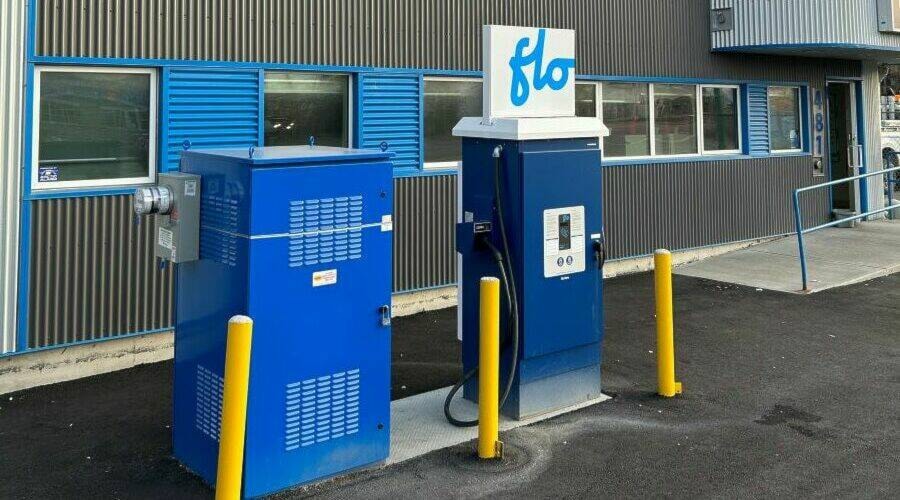The federal government announced in late 2023 that it is aiming for all new light-duty cars and trucks to be zero-emission by 2035.
That’s part of Ottawa’s plan to cut pollution and build a net-zero emissions economy by 2050. The new target is five years earlier than the previous goal of 2040.
As of March 31, 2023, there were a total of 72 electric vehicles (EVs) registered in the NWT.
“Transition to zero-emission vehicles will take time and will not happen overnight,” said Darren Campbell, the territorial Department of Infrastructure’s communications person. “It will take investment from all levels of government: Government of Canada, the Government of the Northwest Territories (GNWT), Indigenous governments, Indigenous organizations and community governments – and investment from businesses and industry to build out charging infrastructure and provide residents with the incentive to use zero-emission vehicles.
Despite regulations requiring all new light-duty vehicles sold in Canada to be zero-emissions by 2035, combustion vehicles will not disappear from NWT roads immediately. Residents and businesses will still be able to operate and maintain their combustion vehicles beyond 2035. Under the federal policy, prospective car buyers in the North will have the option to choose between a battery electric vehicle and a plug-in hybrid vehicle.
A $3.8 million corridor investment
The GNWT is actively supporting several initiatives to promote EV adoption in the NWT, aligning with the 2030 Energy Strategy’s goal of reducing greenhouse gas emissions from transportation by 10 per cent per person by 2030.
“For example, the GNWT provides funding — $100,000 in 2022-2023 and $200,000 in 2023-2024 — under the 2022-2025 Energy Action Plan to support the Arctic Energy Alliance’s Electric Vehicle Incentive Program,” Campbell said. “This program incentivizes the transition to EVs in NWT communities served by hydro power by providing substantial rebates to offset the initial cost of purchasing an EV.”
In collaboration with the Arctic Energy Alliance, the GNWT has subsidized the deployment of two level 2 charging stations in Yellowknife, which are currently available for public use. Furthermore, the GNWT is implementing a plan to install fast-charging outlets in several communities around the Great Slave Lake, most of which are fed by hydro power. This project will result in two level 3 charging station in Yellowknife, while Behchoko, Fort Providence, Enterprise, Hay River, Buffalo Junction and Fort Smith will have one level 3 and one level 2 charger each by the end of this year. All seven locations are scheduled to be completed by December 2024, with the Yellowknife chargers already commissioned in 2023.
The EV corridor project represents a $3.8 million investment from the GNWT and the federal government.
“The GNWT is monitoring the implementation of funded EV projects and will continue to seek new funding to support EV adoption across the NWT,” said Campbell. “The GNWT will also continue working with interested local utilities, community governments, Indigenous governments, Indigenous organizations and businesses to build more EV charging infrastructure in the territories.”
Long way ahead
The growing number of EVs and associated charging infrastructure will mean that the NWT will eventually have to increase its electricity generation, Campbell confirmed. One of the projects that the GNWT is advancing is the Taltson Hydro Expansion Project, which will increase hydro power availability in the North and South Slave regions.
Campbell also said that the territorial government needs to better understand the impact that EV charging will have on electrical infrastructure, particularly in communities where power is produced by diesel generators. This work is included in the 2022-25 Energy Action Plan.
One of the challenges in the NWT is the long distances between many of the communities and the lack of access to electricity on long stretches of NWT highways. Another challenge is the reliance on diesel generators for electricity in remote communities, which isn’t a source of clean power.
The GNWT highlighted some of the advantages of having more EVs in the territory, such as the reduction of greenhouse gas (GHG) emissions, which is expected to help the territory meet its GHG reduction target in the 2030 Energy Strategy: to eliminate 1,094 kilotons of carbon dioxide.
One advantage of electric vehicles is that they are two-to-four times less expensive to operate than vehicles that run on gasoline, according to GNWT analysis. Another benefit is that increased adoption of EVs will create a new market for electricity sales for utilities, which could help to stabilize power rates in the NWT.
